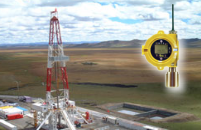When working in an industrial setting, there is a good chance that something will produce a certain amount of hydrogen sulfide gas. It’s a common biproduct of a number of different commercial and industrial processes, so it is incredibly important that detectors and gauges to monitor the levels of it are properly calibrated in order to ensure the safety of workers and people in the surrounding area.
Keep in mind that this procedure can change slightly depending on the exact type of H2S sensor that you buy, so make sure that you check your manual first, but most follow a procedure similar to this one.
Actual Calibrating
Start by installing the unit, placing it where it’s going to do the most good and be easily seen by people in the area. Obstructions that prevent easy visual inspection can reduce the effectiveness of the sensor and even render the whole procedure moot.
Once installed, it’s important to use a zero air of some sort in order to make sure that there is an accurate calibration. “Zero air” is a term referring to an air mixture made of 21% oxygen and 79% nitrogen. Pumping this mixture through the sensor lets it know what an environment free of H2S should be, and then allows you to set an accurate zero mark.
After setting the zero mark, it’s time to use a calibration gas in order to check it. Usually it’s a good idea to use a span gas between 25% and 75% of full scale in order to test and make sure that the sensor is working properly. Using a full scale gas for this can be dangerous both to the equipment and to those testing it, so stick with a partial span of some sort.
Generally, this procedure is performed by two people, one at the sensor transmitter and one at the sensor receiver in order to check the levels as its happening.
Frequency of Recalibration
Mechanical and electronic components are not perfect and it’s a good idea to recalibrate periodically. In most cases this should be done every six months.
The reason why this is necessary is that it’s possible for parts to become misaligned over time due to regular use, not to mention that tiny variations in minute-to-minute operations can add up fairly quickly when considering the hours daily that it will run during the course of its use.
When that time comes, make sure that you disconnect from what is normally being monitored and run more zero air through the system before trying to calibrate. This will ensure that there is no residual H2S in the sensor. After cleaning, run the calibration procedure again to correct for optics shifts and other hardware problems.
So long as you make sure that you follow the calibration procedure properly and periodically, you should have no problems keeping an accurate tally of how safe your business is. The trick is to be careful to monitor and maintain your H2S sensors.

